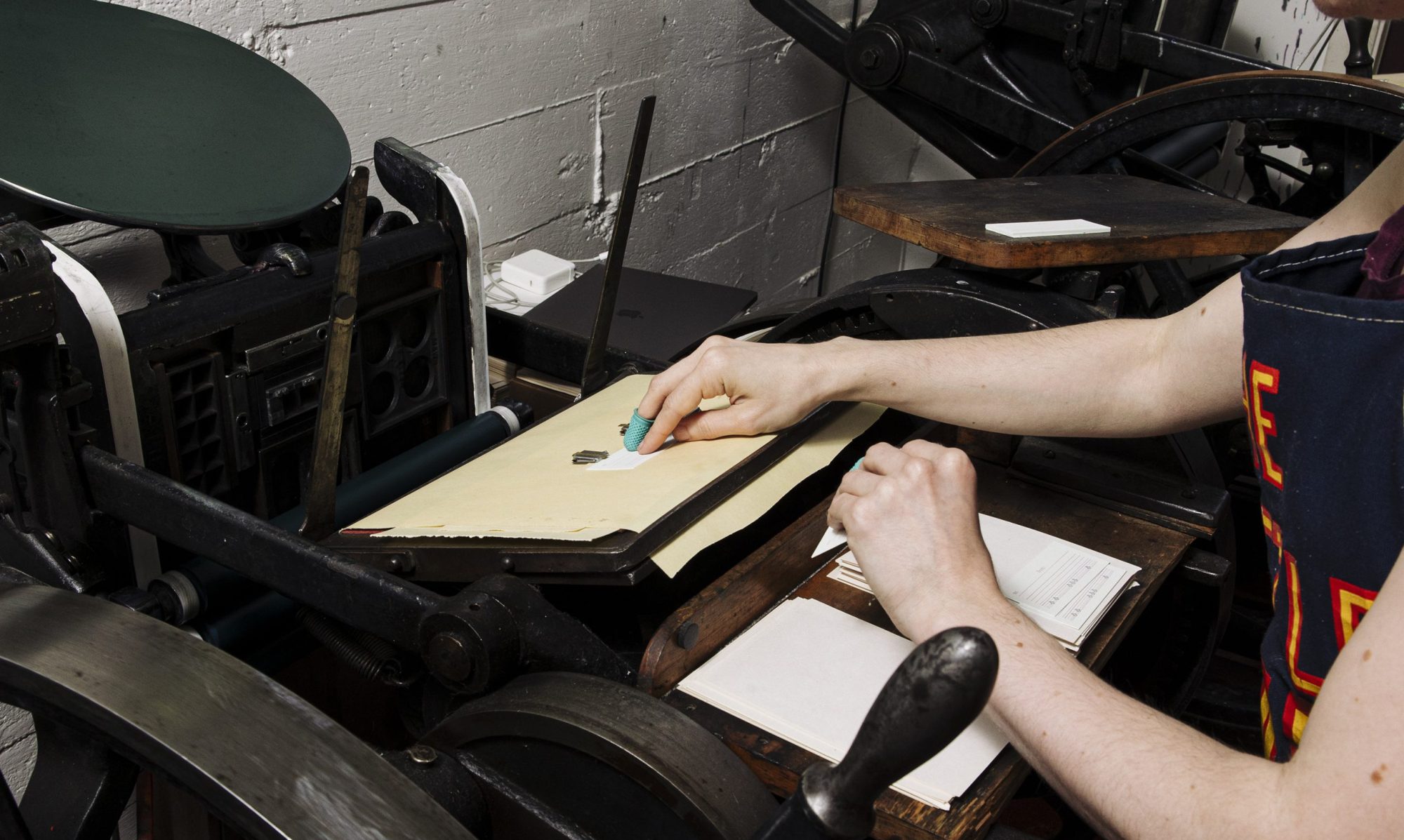Not quite in time to post about it, admittedly, but in time to display it: over the last weekend of Pride Month we made a Pride Flag print for our window! Each stripe was printed from an assemblage of handset decorative pieces, initials, type, and rule. (We promise there are no secret messages in the letters of the orange and violet stripes, only conveniently sized characters.)
Besides its importance for the window display, this print was a good test run of the Vandercook that we moved in a few months ago. We haven’t replaced the rollers yet but for this kind of short, hand-inked project, it’s now in good order, cleaned and oiled and ready to go. The finished size is 12 x 20 in, which about maxes out the printable length of the bed.





















You must be logged in to post a comment.